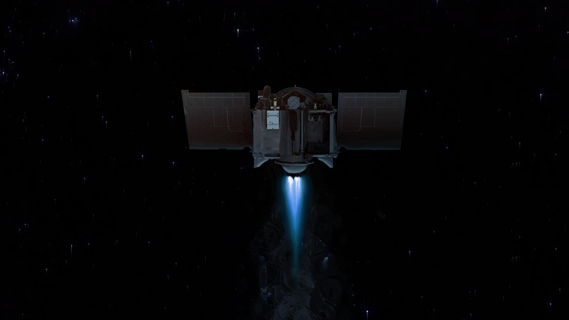 Artist rendition of OSIRIS-REx's main engine firing.
Artist rendition of OSIRIS-REx's main engine firing.The spacecraft of a University of Arizona-led mission to collect a sample from an asteroid fired its engines in space for the first time last month, and scientists are now calling the deep-space maneuver a success.
It’s the first post-launch milestone for the OSIRIS-REx, and a statement from the mission said the spacecraft “aced” it.
OSIRIS-REx launched four months ago and has been orbiting the sun since. Engineers programmed the craft to fire its engines in late December to send the spacecraft back toward Earth where it will get a gravity push toward the asteroid later this year.
“We used the main engines to perform a deep-space maneuver, which was a large burn on the engines to target the Earth gravity assist," said mission leader Dante Lauretta of the UA's Lunar and Planetary Lab.
"OSIRIS-REx uses an Earth gravity assist to change the trajectory of the spacecraft and put us on the path to rendezvous with asteroid Bennu,” he said.
A smaller course refinement was scheduled for Jan. 18 to take out any errors the larger "deep space maneuver" may have caused, Lauretta said.
"The deep-space maneuver showed that the OSIRIS-REx spacecraft is performing flawlessly. We have built an amazing asteroid explorer," he said.
OSIRIS-REx will reach the asteroid in 2018 and spend two years surveying the rock before it descends to the surface to grab a sample that will return to Earth in 2023. Scientists hope the fragments sent back will provide clues to the origins of the universe.

By submitting your comments, you hereby give AZPM the right to post your comments and potentially use them in any other form of media operated by this institution.